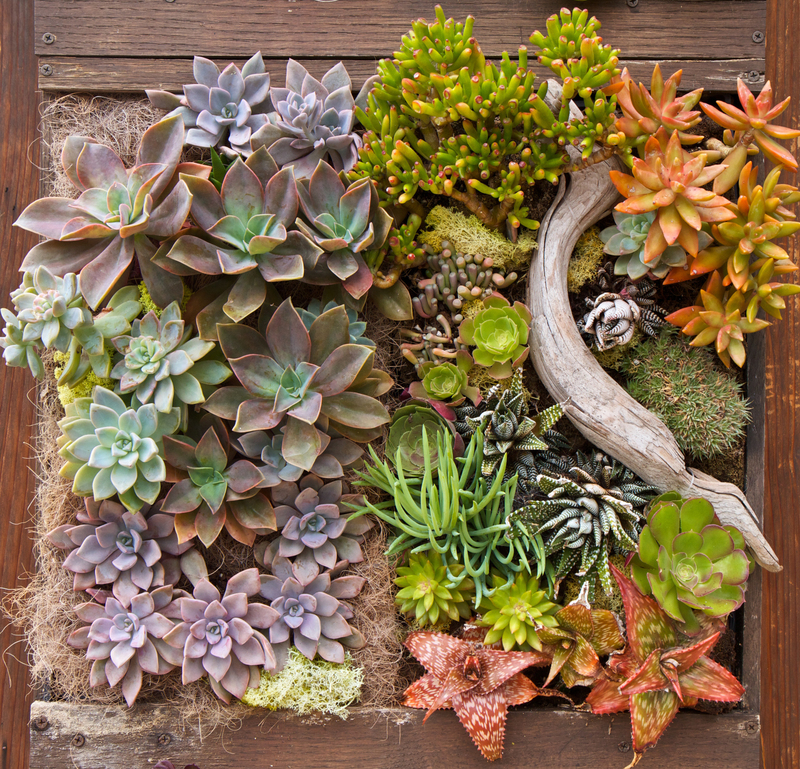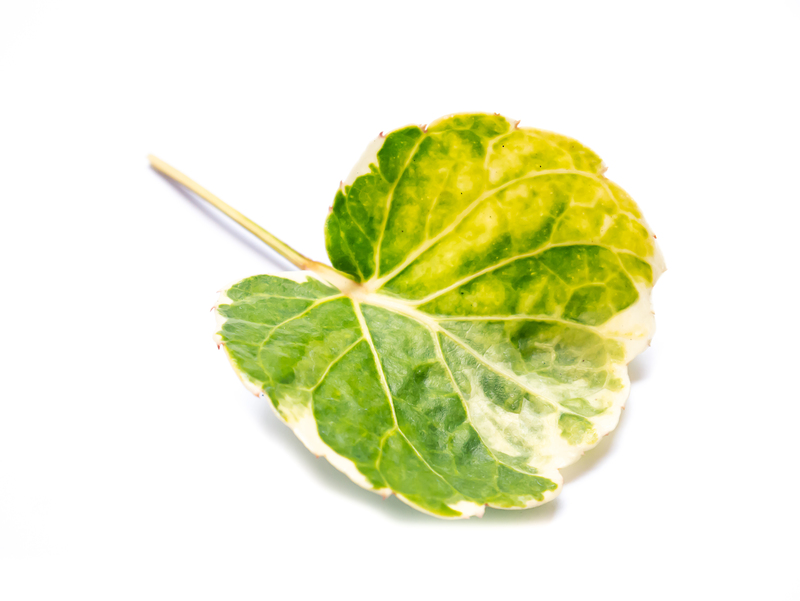Vertical Gardening: Cultivating Beauty Above Ground
Posted on 29/08/2025
Vertical Gardening: Cultivating Beauty Above Ground
Vertical gardening is transforming how we use space, grow plants, and decorate our living environments. As urbanization surges and the demand for greenery in limited spaces grows, savvy garden enthusiasts and homeowners are turning upwards. Vertical gardening is more than just a trend; it's a sustainable, beautiful, and practical way to add lush greenery and color where ground space is at a premium. Whether you're a city dweller, a suburban homeowner, or simply seeking innovative gardening solutions, cultivating a vertical garden brings abundant opportunities for creativity and connection with nature.
What is Vertical Gardening?
Vertical gardening, also known as living walls or green walls, involves growing plants on a vertically suspended panel, wall, or frame. Unlike traditional gardening, which utilizes horizontal space, vertical gardens make use of upward space, maximizing the area available for plants and flowers. This not only conserves space but also adds a stunning visual element to both indoor and outdoor environments.
Key Features of Vertical Gardens
- Space Efficiency: Perfect for small apartments, balconies, and urban environments where horizontal gardening is impractical.
- Aesthetic Enhancement: Creates vibrant, living artwork that can be a focal point in any setting.
- Improved Air Quality: Plants naturally filter air and remove toxins, contributing to a healthier atmosphere.
- Noise Reduction: Green walls can reduce noise pollution by up to 40% in certain settings.
- Biodiversity Boost: Attracts pollinators like bees and butterflies, especially when native plants are used.

The Benefits of Vertical Gardening
Embracing vertical gardening brings a multitude of benefits that go beyond mere aesthetics. Here's why more people are opting to grow upwards:
1. Maximized Growing Space
- Limited Ground Area: Urban dwellers with small patios or balconies can still enjoy a full garden.
- Stacked Planting: Using multi-tiered vertical systems allows for a much higher plant density compared to traditional beds.
2. Versatility
- Indoor and Outdoor Applications: Vertical gardens are possible on exterior facades, fences, and support structures, as well as indoors on walls or as room dividers.
- Diverse Plant Options: From leafy greens to flowering vines and succulents, a wide variety of plants can thrive vertically.
3. Improved Microclimates
- Natural Insulation: Living walls stabilize indoor temperatures, lower heating and cooling costs, and reduce energy use.
- Humidity Regulation: Vertical gardens are natural humidifiers--especially valuable in dry environments.
4. Eco-Friendly and Sustainable
- Rainwater Utilization: Many systems capture and reuse rainwater, reducing the need for supplemental irrigation.
- Pollutant Filtration: Green walls filter air pollutants, providing cleaner air in dense urban areas.
5. Enhanced Wellbeing
- Stress Relief: Studies show exposure to plants and greenery can reduce stress and boost mood.
- Urban Agriculture: Imagine harvesting fresh herbs and vegetables from your living room wall!
Essential Elements of a Successful Vertical Garden
To cultivate a thriving vertical garden, planning and proper materials are crucial. Here's what you need to get started:
1. Support Structures
- Wall-Mounted Systems: Use modular panels or pre-made living wall kits for easy installation.
- Trellises and Frames: Simple trellises can support climbing vines and flowering plants.
- Pallets and Repurposed Materials: Reclaimed wood pallets, shoe organizers, and gutters are trendy and affordable options for vertical planters.
2. Plant Selection
- Light Requirements: Assess the lighting (sun, partial shade, or indoors) and select plants accordingly.
- Growth Habits: Choose plants with compact, trailing, or climbing habits for best visual effect.
- Drought Tolerance: For sun-exposed walls, select succulents, sedums, or drought-tolerant perennials.
3. Growing Medium
- Soil-Based Systems: Use lightweight potting mixes enriched with organic matter.
- Hydroponic & Soilless Systems: Advanced modular living walls sometimes use felt or foam for soilless planting and hydroponic irrigation.
4. Irrigation
- Manual Watering: For small walls, watering by hand is easy and effective.
- Drip Irrigation: Automated drip systems ensure even, consistent hydration--essential for larger or sun-exposed vertical gardens.
Popular Types of Vertical Gardening
Vertical gardens come in many shapes and sizes. Explore the most popular methods of cultivating beauty above ground:
1. Modular Living Walls
- Prefabricated panels or containers, often with built-in irrigation.
- Ideal for both stunning indoor feature walls and exterior architectural statements.
2. Trellises and Climbers
- Simple trellis, mesh, or wire frameworks support vining plants like beans, peas, jasmine, or climbing roses.
- The perfect option for gardeners who want dramatic height and lush greenery.
3. Pocket Planters
- Felt pocket systems, wall-hung planters, or recycled fabric shoe organizers filled with soil and planted up.
- Popular for herbs, greens, and compact flowers, and perfect for kitchen gardens.
4. Pallet Gardens
- Recycled wooden pallets lined and filled with soil, then planted on their side.
- A budget-friendly and eco-conscious way to create vertical beds for edible or ornamental plants.
5. Freestanding Vertical Gardens
- Multi-tiered plant stands or tower gardens allow growing without attachment to a wall.
- Flexible, movable, and suitable for rooftops, patios, and apartments.
Choosing the Best Plants for Your Vertical Garden
The success of your vertical garden hinges on plant choice. Focus on varieties that not only match your light and water resources, but exhibit attractive growth habits and minimal maintenance. Some of the top choices include:
For Sunny Spots
- Succulents (Sedum, Echeveria, Sempervivum)
- Lavender and Rosemary
- Trailing Petunias and Calibrachoa
- Climbing vines like Clematis or Morning Glory
For Shade or Partial Shade
- Ferns (Boston, Maidenhair, Bird's Nest)
- Pothos, Philodendron, and Spider Plant
- Heuchera (Coral Bells) and Begonia
- Impatiens and Coleus
Edibles for Kitchen Gardens
- Culinary Herbs: Basil, Oregano, Parsley, Mint, Thyme, Chives
- Leafy Greens: Lettuce, Arugula, Spinach, Kale
- Cherry Tomatoes, Strawberries, Small Peppers
Vertical Gardening Indoors: Bringing Nature Into Your Home
Indoor vertical gardening opens a world of possibilities for those with little or no outdoor space. An indoor living wall not only purifies air but acts as a dramatic design statement. Whether it's a narrow kitchen herb garden or a sprawling living wall in the lobby, the principles remain the same:
- Choose Low-Light Plants: Many indoor environments lack strong sunlight. Select resilient plants like pothos, philodendron, ferns, and peace lilies.
- Manage Moisture: Use trays or waterproof barriers to prevent water damage to indoor surfaces.
- Organic Appeal: The soft texture and vibrant color of a living wall provide a natural contrast to hard modern interiors.
DIY Vertical Gardening: Creative Ideas You Can Try
Vertical gardening is highly customizable. Here are some innovative ways to craft your own vertical masterpiece:
1. Hanging Bottle Garden
- Repurpose plastic bottles, cut openings along the side, fill with soil, and string them vertically.
- Great for herbs, small greens, or flowers.
- Tip: Ensure bottles have drainage holes to prevent overwatering.
2. Shoe Organizer Wall
- Hang a fabric shoe organizer on a wall or fence, fill the pockets with soil, and plant herbs or lettuce.
- Affordable, easy, and perfect for renters.
3. Gutter Gardens
- Mount cut sections of rain gutters horizontally on a fence or wall, filling with soil and trailing or compact plants.
- Ideal for shallow-rooted crops like strawberries, lettuce, or flowers.
Tips for Maintaining a Thriving Vertical Garden
Like all gardening, vertical gardening has its learning curve. To keep your living wall or vertical planters lush and healthy:
- Check Watering Needs: Vertical gardens often dry out faster. Monitor soil moisture and keep a consistent watering schedule.
- Fertilize Regularly: Feed your plants every month in the growing season with a diluted liquid fertilizer.
- Prune and Deadhead: Regularly trim back overgrown plants and remove dead flowers or leaves to promote continual blooming.
- Watch for Pests: Vertical gardens can attract aphids and mites--use organic pest control methods like neem oil when needed.
- Rotate Plants: Consider swapping out plants seasonally or as they outgrow their space to keep the display fresh and dynamic.
Common Challenges and Solutions in Vertical Gardening
Every garden comes with its challenges. Here's how to address some of the most common issues in vertical gardening:
- Uneven Water Distribution: Water tends to run down, potentially leaving upper levels dry. Use drip irrigation systems for even distribution.
- Choosing the Wrong Plants: Some plants just aren't suited for vertical life. Always consider the plant's mature size, water needs, and growth habit.
- Poor Structural Support: Overloaded walls can cause damage. Always secure frames and only use structures capable of supporting the weight when wet.
- Sunburn or Shade Burn: Monitor light exposure and adjust plant types or reposition your vertical garden as necessary.
Vertical Gardening in Urban Spaces: Transform Your City Life
Urban vertical gardening has an especially profound impact. Rooftops, alleyways, and high-rise balconies become hidden havens of tranquility and productivity. Homeowners' associations, schools, and businesses use living walls to beautify the urban landscape, reduce the heat island effect, and even produce food for communities.
Case Studies:
- Restaurant Living Walls: Many modern restaurants now install vertical gardens to grow fresh herbs right on site, delighting customers with both taste and aesthetic appeal.
- Community Projects: Public spaces, transit stations, and parks are utilizing green walls and vertical gardens for cleaner air and vibrant appearance.
- Balcony Gardens: Apartment dwellers use tiered planters, railing baskets, and modular shelves to create a private oasis in the sky.

Sustainability and the Future of Vertical Gardening
As environmental awareness grows, vertical gardening stands out as a sustainable solution for the challenges of modern living. By using less water, recycling containers, reducing food miles, and maximizing the human-nature connection, vertical gardens will play an ever-increasing role in green architecture and eco-conscious lifestyles. Advances in hydroponics, modular wall designs, and renewable materials promise an exciting future for cultivating beauty above ground.
Conclusion: Elevate Your Garden--And Your Life
Whether you're transforming a bare office wall into a lush tapestry, cultivating herbs for the kitchen, or creating privacy on your patio, vertical gardening is a practical, beautiful, and environmentally responsible choice. It allows anyone--regardless of space constraints--to engage in the joy of gardening, improve their environment, and reconnect with the rhythms of nature. As you explore vertical garden ideas, remember that your only limit is your imagination. Start small, experiment boldly, and watch as you skillfully cultivate beauty above ground.
Ready to get started with your own vertical garden? Embrace the vertical dimension and transform your surroundings into vibrant, living works of art--one plant at a time.

